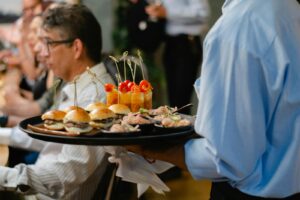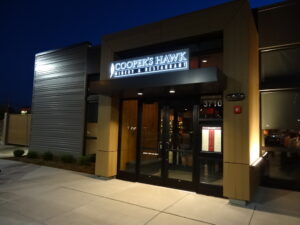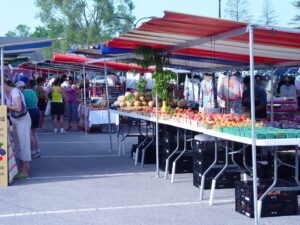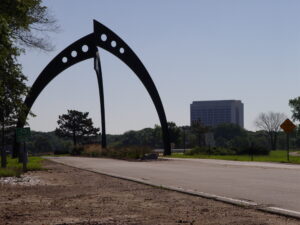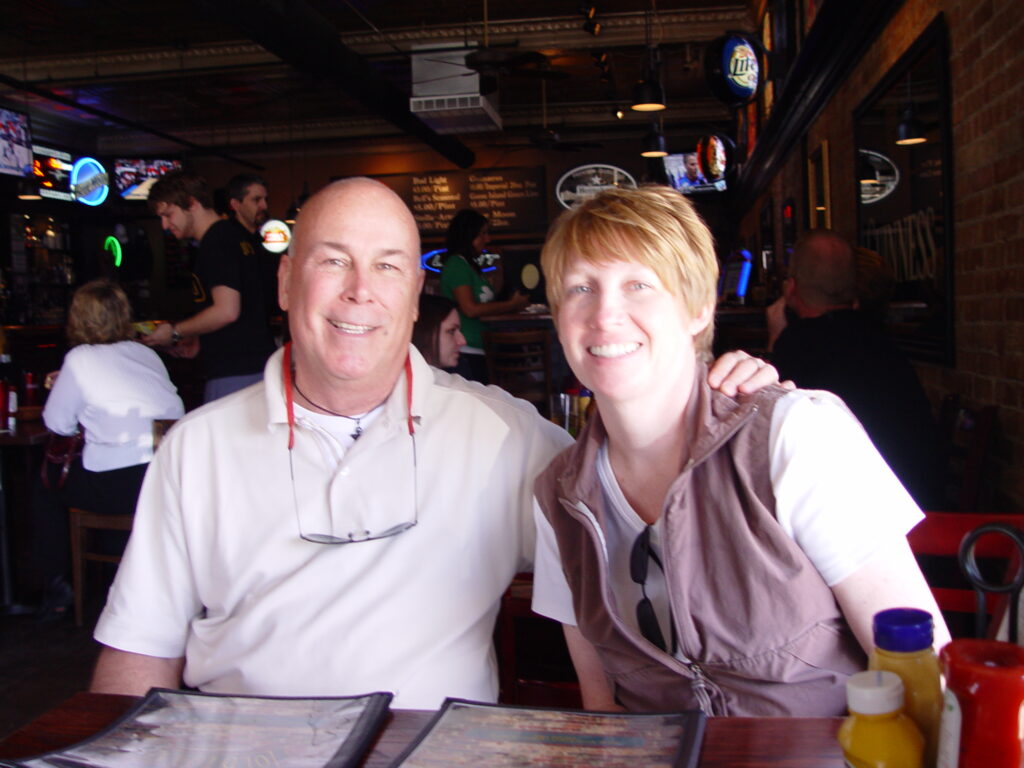Physics is a subject that generally will scare the pants off most people… “and even some physics teachers” – at least according to what Leon Lederman (Nobel Prize-winner, author and former Director of Fermilab in Batavia, IL) once said in a lecture I heard him give a long time ago.
(This page may contain affiliate links. Read our disclosure about affiliate links.)
The Sub-Atomic World and the National Accelerator Laboratory
At that point in time, I was about as unaware of the world of particle physics and the research taking place at Fermilab as anyone could ever imagine. The reason? In 1981, I was a beginning Physics teacher at the high school level. But even in 1981, common knowledge of the sub-atomic world – at least for most people – pretty much consisted of only protons, neutrons, and electrons. Most weren’t even exactly sure what those particles were. Period. But let’s back up just a bit…
Forty-six states at one time competed to be the site that would be home to a “frontier high-energy physics project”. The little town of Westin, Illinois (partly in Du Page County and partly in Kane County) was selected in mid-December of 1966 as the location for the National Accelerator Laboratory.
Over the next several years, the State of Illinois acquired the real estate – the land and its farms – and then donated the land to the Atomic Energy Commission for the construction and operation of the Laboratory. The facility ultimately displaced the residents of Westin and fifty-six farm families.
Real Purpose of Fermilab
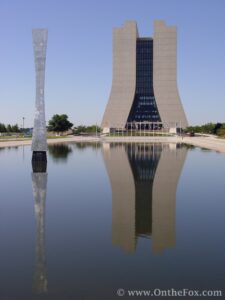
I remember when the lab was first being built, back in the late ’60’s. The 6,800-acre parcel of land spanning parts of the two counties was under the control of the Federal Government. John Q. Public was generally not allowed on-site, and the perception was that a lot of top-secret and dangerous stuff was probably taking place there.
Little knowledge of the real purpose of the lab seemed to be available, and a lot of folks were just plain suspicious. After all, high-energy particle physics research is not something in which most people were keenly interested at the time. Oddly, even today in the early 21st century, many people are still unaware of not only the type of research going on at the facility, but of its value.
Fermilab, Enrico Fermi and the Birth of the Nuclear Age
Groundbreaking for Fermilab was held on December 1st of 1968, with the Main Ring of the accelerator being completed in 1971. In May of 1974, the Laboratory was dedicated and renamed Fermi National Accelerator Laboratory. The complex is now known simply as Fermilab, in honor of the internationally renowned physicist Enrico Fermi.
Fermi, himself a noted Nobel Prize winner in Physics, was placed in charge of the Manhattan Project. His task? Designing the very first nuclear pile at Stagg Field on the University of Chicago Campus. The nuclear age was born there in 1942 with the first self-sustaining, continuous nuclear reaction.
Fermi was also present at Alamogordo, New Mexico where, on July 16, 1945, the first atomic bomb was detonated at Alamogordo Air Base. He probably knew more about nuclear physics than almost anyone else in the world.
Teacher Program & Saturday Morning Physics
In 1984, I attended a summer class that was designed for teachers so that they could bring useful information back to their classrooms and share it with students. The goal was to engage them, challenge them, and encourage them to become tomorrow’s leaders in math and science. There was also a fabulous program entitled Saturday Morning Physics that was designed just for students.
One of the most incredible aspects of the teacher program was the opportunity to take several tours of the lab. We toured from the control room that guided sub-atomic particles around the great ring beneath the fertile prairie and the massive Collider Detector Facility (CDC).
At the CDC, “events” such as the results of the collisions were recorded. We also viewed the “Bubble Chamber”. This was one of the areas that impressed me the most. The reason? Because the magnetic field there was so strong that it almost pulled the nails from the heels of my loafers. It did, however, completely wipe the information from a friend’s credit card1
More importantly, it was here that the rudiments of understanding about the sub-atomic world first hit me. Much like the first hardball off the bat of a much older kid as he nailed a fastball I delivered as a pitcher against him.
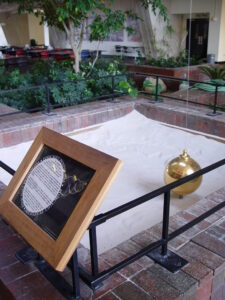
Not the Fiction of TV Shows – This Was Real Science
I had thought all along that topics like “light speed” and “anti-matter” were only the stuff of TV shows like Star Trek, and that solid objects did not allow other objects to pass through them. The hardball would not have hurt, had it simply passed through my hip. How wrong I was. This was real science, not the fiction found in books or even Hollywood.
I had the good fortune to meet a Fermi scientist who had spent three years of his life trying to measure the mass of a sub-atomic particle called a neutrino (first identified by Fermi). He was unsuccessful! That this particle could travel at almost the speed of light and pass through many feet of solid iron seemed more than I could conceive. Recently, I learned that the study of the elusive neutrino has continued.
These particles are generated at Fermilab and fired northward to a location more than a half-mile underground in the Soudan Underground Mine State Park in Minnesota. Fermilab’s accelerator will shoot 10 trillion neutrinos at Soudan every two seconds. The pulses last only ten-millionths of a second. The neutrinos will arrive at Soudan in only 2.5 millionths of a second… after traveling through 450 miles of solid rock. That’s almost 8 million miles per second! Very large numbers – amazing!
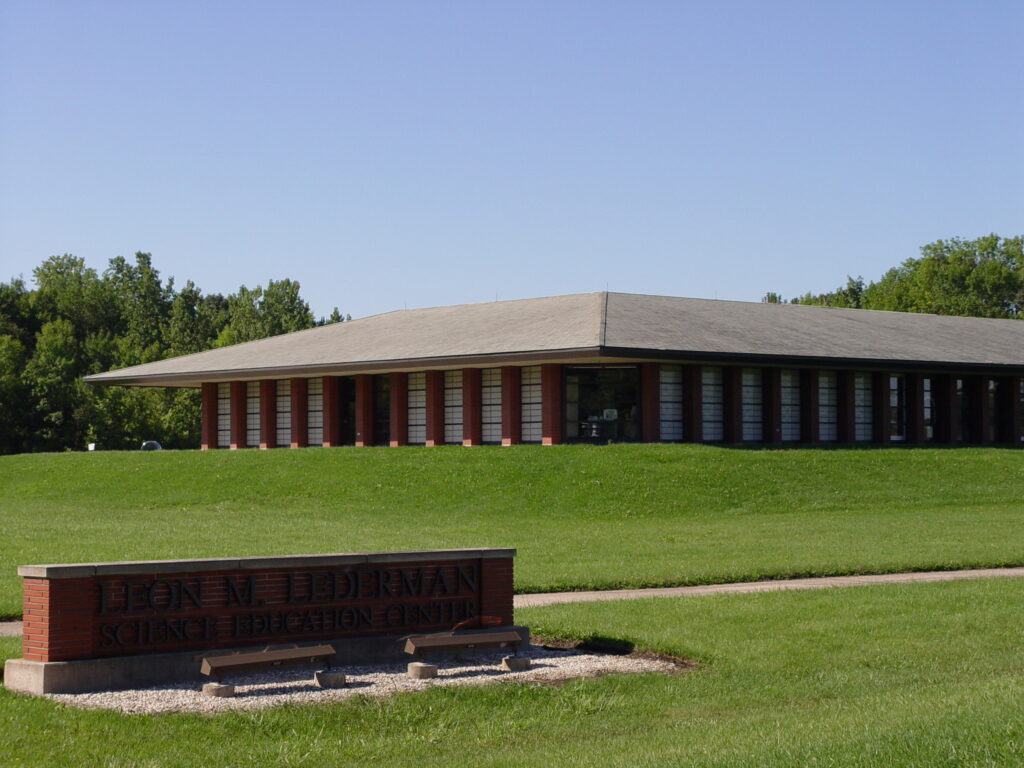
By-Products of Research at Fermilab
Even as a teacher of physics, much of what was going on at the lab located within minutes of my house remained over my head. The neutrino project for instance, aims to unlock more of the secrets of the universe and things like “Dark Matter”. This may be uninteresting and unusable to most. But through the years, I learned of the “by-products” of the research being done there.
The lab has brought to and spent in Illinois, millions of dollars. In addition, consider the lab’s 2,000-plus scientists who live in the local counties and buy groceries and pay taxes here. And think of spin-offs such as the cancer treatment center at Fermi that uses radiation by-products from experiments, or the medical imaging machines used to detect disease. These aspects are much easier for most of us to understand and relate to.
And there are other, more tangible aspects to having a world-class facility such as Fermilab. Think: here is a facility that is open and available to the public, located literally in our own back yard.
Tours, Programs and… Tom Skilling
Ask a Scientist
The lab has an incredible number of tours and programs available for people who are high school age and older. There are guided tours, Sunday afternoon “Ask a Scientist” programs, hands-on science exhibits at the Lederman Science Center for grades K-12, bison viewing, concerts, lectures, bird watching, seminars, cultural and social events and even dancing.
WGN TV’s Tom Skilling – now retired – held a free Tornado and Severe Storm Weather Seminar every spring to standing-room-only audiences for 36 years. There are also hundreds of acres that are being restored to tallgrass prairie, contributing a wealth of environmental knowledge.
And while you are at Fermilab, perhaps you can stay for lunch or dinner at their restaurant, Chez Leon. It’s named after the lab’s second director, Dr. Leon Lederman.

Inquiring Mind and a Place to Visit
If you perhaps have the inquiring mind of a scientist who wants to know more about things like the Higgs particle. Or maybe you are curious about how the Tevatron works. Maybe you would like to see a bison – up close. You might simply have an interest in knowing what is over there – east of Kirk Road in Batavia. No matter. Fermilab is a great place to visit. Trust me, everyone there, from the tour guides to the scientists, are some of the friendliest people that you will meet. And they are eager to answer your questions.
So, take advantage of one of the finest resources in the world, and make a plan to see what Fermilab has to offer. (By the way, there is a tremendous view from the top of Wilson Hall!) Visitors are able to enter the Fermilab site by car through the Batavia Road and Pine Street entrances.
Additional Resources, Links & Products
- Visit Fermilab (official website)
- The Last Man Who Knew Everything: The Life and Times of Enrico Fermi, Father of the Nuclear Age by David N. Schwartz (Amazon book)
- Fermilab: Physics, the Frontier, and Megascience (Amazon book)
- The God Particle: If the Universe Is the Answer, What Is the Question? by Leon Lederman and Dick Teresi (Amazon book)
- T-shirt with the Golden Rule of Fermi formula, Quantum Physics (Amazon.com)


